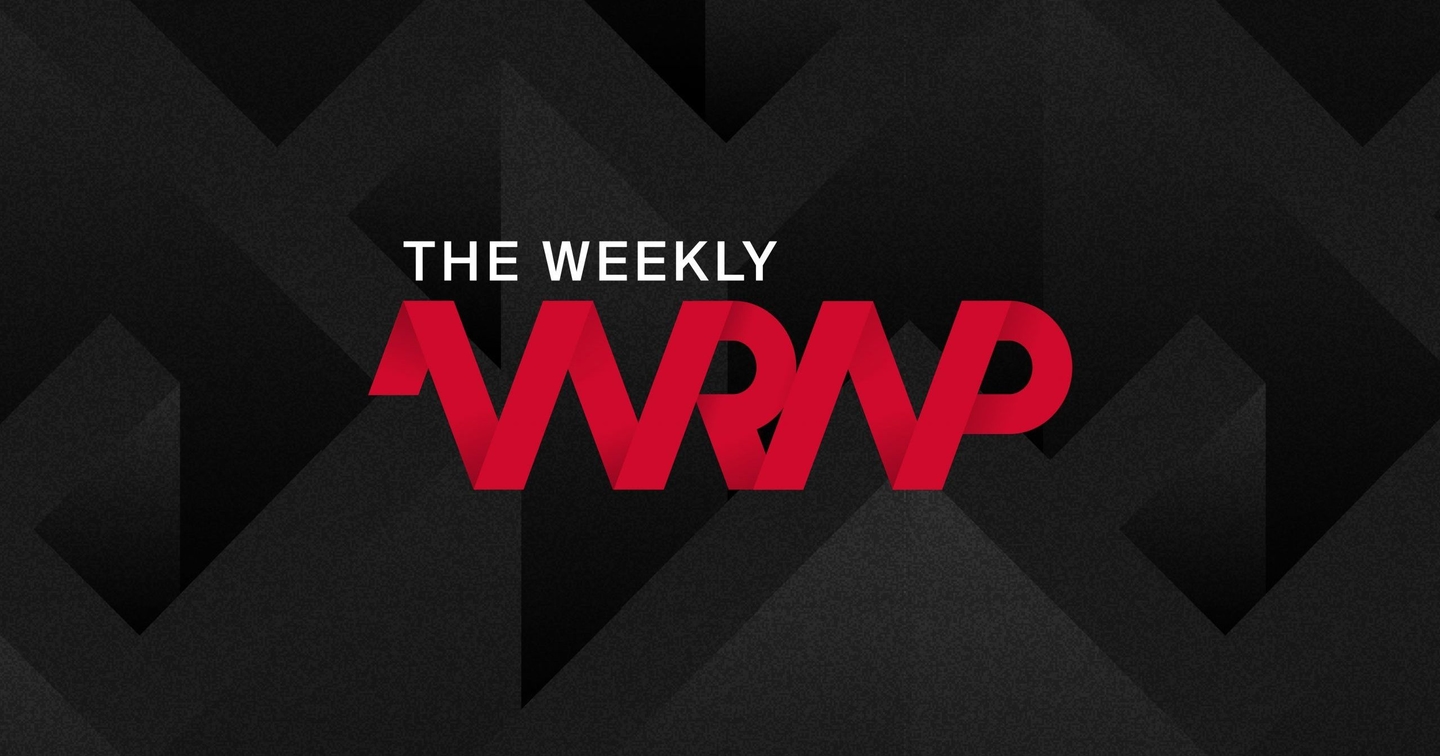
Decentralized Storage Solutions, Staking Ban in the U.S., and a real CBDC alternative

1. Decentralized Storage Solutions cost a fraction of traditional cloud services
The Facts:
- Compared to Amazon’s AWS centralized data storage crypto protocol Filecoin enables monthly storage of 1 Terabyte of data at merely 19 cents, compared to Amazons fee of $23, being 121 times more expensive.
- Past year a total of 17 million Terabytes (TB) of data storage is available on the four largest decentralized storage networks, Filecoin, Arweave, Sia and Storj, while offering storage solutions at roughly 70% lower costs compared to centralized providers.
Our Take:
- With substantially lower costs and increased efficiency, decentralized storage is an enabler of the disintermediation of the centralized data (cloud) storage.
- However, the development is still in its initial phase, as only roughly 532’000 TB of data have been stored on the available 17 million TB, roughly 3% of the total capacity.
- Nevertheless, centralized data storage providers entail one single point of failure, and point of trust for one’s data being stored, whereas a network of decentralized, independent nodes does not, while being permissionless, providing enhanced privacy, environmental sustainability and being more cost effective.
- However, the downsides of decentralized storage are less efficient data processing times, due to its decentralism, and due to the operating mechanism of a blockchain, small and frequent usage of one’s data might become too expensive, if performed on a small scale.
- Decentralized storage protocols and blockchain are offering an attractive alternative to existing centralized providers, which have a decent potential to grow into serious competitors in the long-term because centralized providers are unable to compete and keep up with the efficiency gained by storing data in a decentralized manner.

2. SEC looking to ban staking in the United States
The Facts:
- Coincidentally with Coinbase CEO Brian Armstrong mentioning rumors about the SEC attempting to get rid of staking, the SEC fined Kraken $30 million for not registering “staking-as-a-service”.
- Following the fine, Kraken stated that all US based customers crypto assets will be unstaked next week, whereas international, non-US based clients’ funds remain unaffected.
- The SEC justified its decision by insufficient disclosures from CeFi firms as to how user’s staked assets are protected, as well as fixed staking APRs being promised, making staking a security in the SEC’s view.
Our Take:
- Staking is a crucial, fundamental security mechanism of any proof-of-stake network, with the SEC’s targeting of staking being a critical attack amidst a generally weak market throughout the crypto winter.
- Though the targeting was directed at CeFi actors offering staking under insufficiently disclosed terms, making it more similar to a yield product offered by many of the now bankrupt CeFi lending platforms, it is important to monitor the ongoing situation carefully.
- Given the rumors voiced by Coinbase, almost simultaneously with the crackdown on Kraken, there might be further repercussions to be expected, with regards to CeFi staking in the U.S., in the near future, whereas the international staking landscape appears to be in the clear as of now.
- Despite the setback for the industry, staking in general has not been in the SEC’s visor, which implies that decentralized staking via providers such as Lido and RocketPool potentially picking up soon, offering a gateway for continued staking from U.S. based clients.
- Lastly, the general debate, whether staking makes crypto assets de facto securities remains questionable, as regulators failed to give a clear indication, whereas industry experts analyzed this question in great detail, failing to categorize staked crypto assets a security, as based on the Howey Test.
- Regardless of regulators’ final verdict, decentralized staking, as well as future liquid staking offer various alternatives in order to mitigate the hurdles put in place by regulators confronting U.S. based CeFi staking providers.
3. Tokenized cash deposits offer a viable alternative to CBDC
The Facts:
- A report by OliverWyman and Onyx by J.P. Morgan introduces the concept of tokenized cash deposits, i.e., deposit tokens, providing a sound alternative to CBDCs, while eliminating the downsides of a CBDC.
- Deposit tokens represent cash and deposits held at commercial banks, while the digital, tokenized variant enables all types of engagement that stablecoins offer.
- Compared to CBDCs, which are controlled by one single centralized entity, the respective central bank, tokenized deposits are emitted by each commercial bank, being backed by the respective bank’s deposits and cash equivalents.
Our Take:
- Similar to stablecoins, deposit tokens enable peer-to-peer transaction of funds via the blockchain, with improved efficiency and instant settlement.
- Deposit tokens, in contrast to CBDCs, do not (e)liminate commercial banks, since CBDCs would most certainly make them obsolete and unprofitable by excluding them from the emission of cash on the one hand, while there would be no benefit of holding a CBDC at a commercial bank on the other hand.
- Because deposit tokens are a mere representation of commercial banks existing holdings and deposits, simply in digital form, the contrast to the existing banking system, though certainly not perfect, would not be altered and shifted in the direction of centralized control, but rather a digitalization of the cash as we know it.
- This also avoids the issuance of a CBDC in a wholesale manner, with questionable distribution mechanisms.
- Furthermore, commercial banks issuing deposit tokens have better customer knowledge and anti-money laundering expertise than central banks do, while simultaneously operating in a local and efficient manner, compared to a top-down monetary control of central banks.
- Tokenization of securities will be a large development in the future, with the tokenization of commercial banks holdings of abolishing cash by multiple individual entities being not very different from the creation of a stablecoin by a CeFi actor.
- Also, because commercial banks are incentivized to make profits, compared to central banks simply printing their “profit”, called seigniorage, i.e., the profit made from creating money, deposit cash tokens have extended functionalities that make them suitable for usage in DeFi and protocol interaction as well as transaction settlement.
- Overall, tokenized deposits are a stepping stone to introduce wide-spread tokenization of real world assets (RWA), fitting them in the existing framework of our decently regulated banking system, without the need to creating further, even more centralized and controlled means of money.
In other news
- Total of $3 million in crypto donated for earthquake relief (via Nansen)
- How much control does a16z have over Uniswap (via Unchained)
- Michael Saylor rebuts Munger’s Bitcoin critique (via Coinmarketcap)
- Genesis reached crucial agreement for restructuring (via Cointelegraph)
- Chainanalysis 2023 crypto crime report (via Chainanalysis)
- Deutsche Bank looking to invest in two crypto firms (via Coindesk)
You’d think that with historically low unemployment rates, consumer sentiment should be near highs. It’s not…it's still near multi-decade lows despite bottoming out during peak inflationary concerns in June 2022. Maybe it's because housing affordability is at worse levels than before the 2008 financial crisis, and a carton of eggs costs $6+ in my local grocery store. I’m not sure what this means for my magic internet coins, but I might need to sell some to continue to fund my morning bacon, egg, and cheese routine
EffortCapital from Blockworks– via Blockworks Research daily newsletter
114% gain
In net worth of the bottom 50% of the population from 2019 to 2022, compared to only a 33% gain in net worth for the top 1% of the population in the same period. Via Lyn Alden
Plotting the differences across Deposit Tokens, Stablecoins and CBDC

“Want to be informed about the latest developments in institutional adoption of crypto assets? Check out our Outlook 2023 article featuring an interview with our CEO, Dirk Klee, for insights on the institutional adoption of crypto assets in 2023.”
“Curious what the year 2023 will look like? Read our 2023 Outlook, which has been published last week. (Subscribe the Outlook Updates to receive the copy straight to your inbox!)”